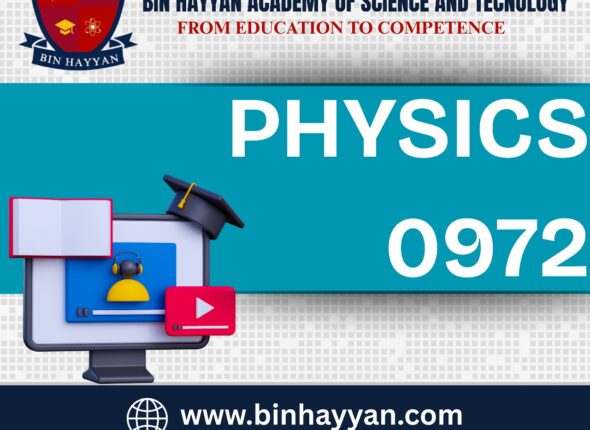No products in the cart.



Students study the following topics
1. Number
2. Algebra and graphs
3. Coordinate geometry
4. Geometry
5. Mensuration
6. Trigonometry
7. Transformations and vectors
8. Probability
9. Statistics
Course Content
Number
-
Identify and use: • natural numbers • integers (positive, zero and negative) • prime numbers • square numbers • cube numbers • common factors • common multiples • rational and irrational numbers • reciprocals.
-
Example tasks include: • convert between numbers and words, e.g. six billion is 6000000000 10007 is ten thousand and seven • express 72 as a product of its prime factors
-
• find the highest common factor (HCF) of two numbers • find the lowest common multiple (LCM) of two numbers.
-
Understand and use set language, notation and Venn diagrams to describe sets and represent relationships between sets.
-
Venn diagrams are limited to two or three sets. The following set notation will be used: • n(A) Number of elements in set A • ∈ “… is an element of …” • ∉ “… is not an element of …” • A′ Complement of set A
-
• ∅ The empty set • Universal set • A ⊆ B A is a subset of B • A ⊈ B A is not a subset of B • A ∪ B Union of A and B • A ∩ B Intersection of A and B.
-
Example definition of sets: A = {x: x is a natural number} B = {(x, y): y = mx + c} C = {x: a ⩽ x ⩽ b}
-
Calculate with the following: • squares • square roots • cubes • cube roots • other powers and roots of numbers.
-
Includes recall of squares and their corresponding roots from 1 to 15, and recall of cubes and their corresponding roots of 1, 2, 3, 4, 5 and 10, e.g.: • Write down the value of (169)^1/2 • Work out 5^2x^3(8)^1/3 .
-
1 Use the language and notation of the following in appropriate contexts: • proper fractions • improper fractions • mixed numbers • decimals • percentages.
-
2 Recognise equivalence and convert between these forms.
-
Candidates are expected to be able to write fractions in their simplest form. Recurring decimal notation is required, e.g. • 0.1 7 = 1777…. • 0.123 =0.1232323…• 0.123 =0.123123…
-
Includes converting between recurring decimals and fractions and vice versa, e.g. write 0.17 as a fraction.
-
Order quantities by magnitude and demonstrate familiarity with the symbols =, ≠, >, < , ⩾ and ⩽.
-
Use the four operations for calculations with integers, fractions and decimals, including correct ordering of operations and use of brackets.
-
Includes: • negative numbers • improper fractions • mixed numbers • practical situations, e.g. temperature changes.
-
Understand and use indices (positive, zero, negative, and fractional).
-
Understand and use the rules of indices.
-
• find the value of 7^ –2, e.g. find the value of 2^–3 × 2^4 , (2^3 )^2 , 2^3 ÷ 2^4
-
Use the standard form A × 10n where n is a positive or negative integer and 1 ⩽ A < 10.
-
Convert numbers into and out of standard form.
-
Calculate with values in standard form.
-
Round values to a specified degree of accuracy
-
Make estimates for calculations involving numbers, quantities and measurements.
-
Round answers to a reasonable degree of accuracy in the context of a given problem.
-
Includes decimal places and significant figures. e.g. write 5764 correct to the nearest thousand. e.g. by writing each number correct to 1 significant figure, estimate the value of 41.3/9.79*0.765
-
Give upper and lower bounds for data rounded to a specified accuracy.
-
Find upper and lower bounds of the results of calculations which have used data rounded to a specified accuracy
-
e.g. write down the upper bound of a length measured correct to the nearest metre. Example calculations include:
-
• calculate the upper bound of the perimeter or the area of a rectangle given dimensions measured to the nearest centimetre • find the lower bound of the speed given rounded values of distance and time
-
Understand and use ratio and proportion to: • give ratios in their simplest form • divide a quantity in a given ratio • use proportional reasoning and ratios in context.
-
e.g. 20:30:40 in its simplest form is 2:3:4. e.g. adapt recipes; use map scales; determine best value.
-
Use common measures of rate.
-
e.g. calculate with: • hourly rates of pay • exchange rates between currencies • flow rates • fuel consumption
-
Apply other measures of rate.
-
e.g. calculate with: • pressure • density • population density. Required formulas will be given in the question.
-
Solve problems involving average speed.
-
Knowledge of speed/distance/time formula is required. e.g. A cyclist travels 45km in 3 hours 45 minutes. What is their average speed? Notation used will be, e.g. m/s (metres per second), g/cm3 (grams per cubic centimetre).
-
Calculate a given percentage of a quantity
-
Express one quantity as a percentage of another
-
Calculate percentage increase or decrease.
-
Calculate with simple and compound interest.
-
Problems may include repeated percentage change. Formulas are not given.
-
Calculate using reverse percentages.
-
e.g. find the cost price given the selling price and the percentage profit. Percentage calculations may include: • deposit • discount • profit and loss (as an amount or a percentage) • earnings • percentages over 100%.
-
Use a calculator efficiently
-
e.g. know not to round values within a calculation and to only round the final answer.
-
Enter values appropriately on a calculator.
-
e.g. enter 2 hours 30 minutes as 2.5 hours or 2° 30’ 0’’.
-
Interpret the calculator display appropriately.
-
e.g. in money 4.8 means $4.80; in time 3.25 means 3 hours 15 minutes.
-
Calculate with time: seconds (s), minutes (min), hours (h), days, weeks, months, years, including the relationship between units.
-
1 year = 365 days
-
Calculate times in terms of the 24-hour and 12-hour clock
-
In the 24-hour clock, for example, 3.15 a.m. will be denoted by 0315 and 3.15 p.m. by 1515
-
Includes problems involving time zones, local times and time differences.
-
Calculate with money.
-
Convert from one currency to another.
-
Use exponential growth and decay.
-
e.g. depreciation, population change. Knowledge of e is not required.
Algebra and graphs
Coordinate geometry
Geometry
Mensuration
Trigonometry
Transformations and vectors
Probability
Statistics
Student Ratings & Reviews

No Review Yet










